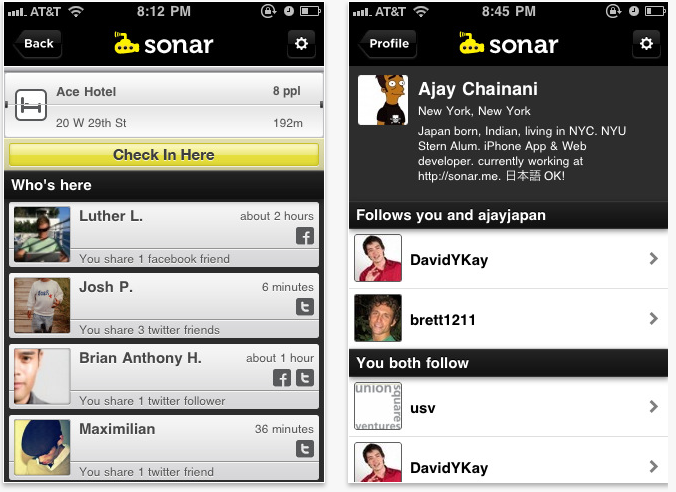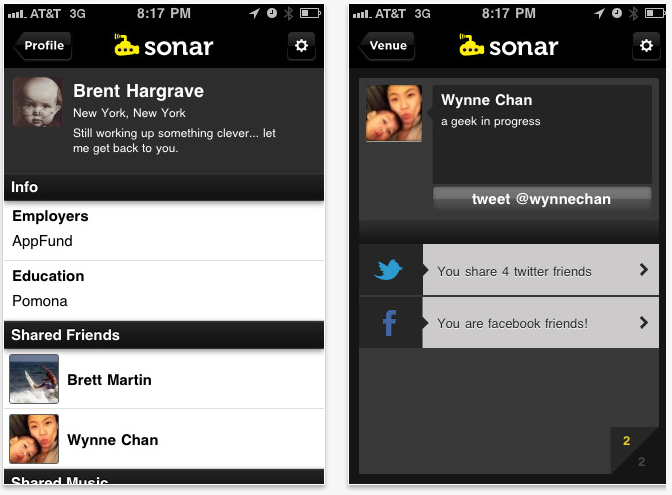
Imagine heading to a party, or a conference, or a bar and getting a briefing before you go of the people who will be there, and how they are connected to you. Your briefing would include photos, profiles, links to social media presences, and of course, the person or people who you know in common.
Armed with this information, professional party goers could have an unfair advantage in creating witty conversation. Sales people could create connections with potential clients, seemingly out of thin air. And the players among us could find themselves with plenty to talk about with that special someone.
This is Sonar, and it’s truly brilliant.
It’s Rapportive for the real world, it’s your own personal attache to remind you who you should (and shouldn’t be) speaking with, and it’s a great big spotlight shedding light on those interesting people who are just two degrees away.
One of the confusing aspects of the term “social networking” is that it implies meeting new people. On Facebook, the largest social network of them all, meeting new people is not really part of the equation – it’s more about keeping up with the people you already know.
Early geosocial pioneers like Foursquare and Gowalla took this concept of connecting with people you know and added the element of location and presto – you had a great way to potentially meet up with friends.
Only recently have geo networks dared take on the high risk / high reward project of connecting strangers in the real world. Meet Gatsby, a favorite of mine, uses a digital concierge approach to try and match you with people you might get along with. AgoraApp tweets back at you if friends of friends are nearby when you check in with Foursquare.

But Sonar shows you everything. All nearby venues with a list of folks who are there, ranked by the people you know in common. And because it is based on the friend of a friend model, there is at least the perception that Sonar is less risky than just getting matched with strangers in the street.
Amazingly, on launch day, Sonar is already working pretty well – at least here in San Francisco. Firing up the app shows me that there are nine people with whom I share a Twitter or Facebook connection currently at Zeitgeist, a beer garden down the street.
How did Sonar pull off this critical mass from day one? Wisely, they chose to build on existing Foursquare, Facebook, and Twitter data meaning they can already provide a good experience in places where people use those services to check in.
I’m excited about this service, and I think it could even end up being more useful than some of the services whose data it is built on top of.

Get the TNW newsletter
Get the most important tech news in your inbox each week.





